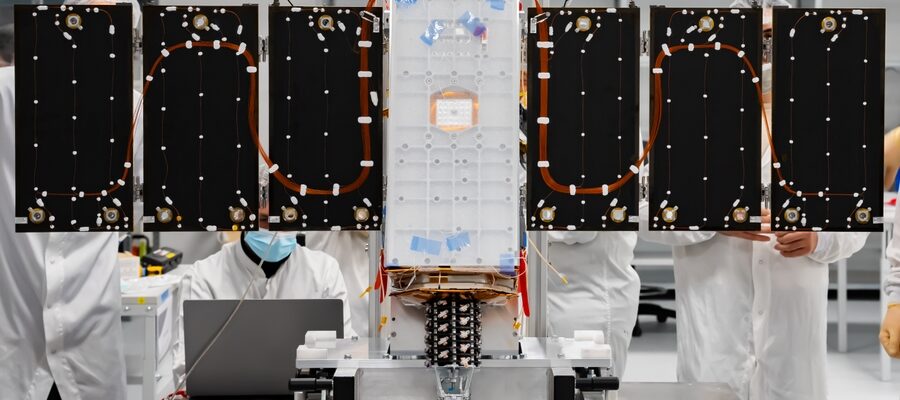The shooting window is scheduled for this summer. From June, the Toulouse startup Kinéis plans to launch a constellation of 25 nanosatellites, from New Zealand from the summer of 2024, using the Electron launcher from the American Rocket-Lab. The project is in no way comparable to SpaceX’s Starlink and Amazon’s soon-to-be Kuiper megaconstellations which, made up of thousands of satellites, clutter space and pose serious environmental risks.
The objective here is not to offer high-speed internet to residents of remote areas of the globe. Dedicated to IoT, the Kinéis constellation will make it possible to connect, not human beings, but any connected object in the world. The data (small messages) will be transmitted in near real time, at low speed and with very low energy consumption.
Due to its size, a nanosatellite does not operate in the same category as a telecommunications satellite. A true distillation of technology, it weighs only 28 kg. The volume of the main body of the nanosatellite corresponds to the equivalent of 16 milk cartons. Once deployed, its solar panels are 1.40 m high and 1.60 m long. Lifespan: 8 years.
Ten nanosatellites for the price of one satellite
This miniaturization of electronic components has made it possible to considerably rationalize costs and optimize production times for nanosatellites. “ It is now possible to manufacture ten nanosatellites for the price of one satellite », explains Kinéis. While the design and construction of a satellite the size of a large car can take anywhere from a few months to several years, production of the 25 nanosatellites took only 6 to 7 months.
This true technological feat is the result of the know-how of the French space industry. Created in 2018, Kinéis is a spin-off from the company Collecte localization satellites (CLS), a subsidiary of the National Center for Space Studies (Cnes). The nanosatellite was designed by French industrialist Hemeria, Thales Alenia Space and Syrlinks (Safran group). With a fundraising of 100 million euros in 2020, the financing is also 100% French with Bpifrance, CLS and Cnes as main investors.
Forest fire detection
Thanks to its constellation of 25 nanosatellites in low orbit, at an altitude of 650 km, and its network of 20 ground stations, this project is intended to replace the Argos beacon system. Launched in 1978, the global system for localization and collection of geopositioned data has reached its limits, particularly in terms of data updating time.
The Kinéis constellation is made up of five orbital planes equally distributed around the Earth, with five satellites then homogeneously occupying each plane. “GThanks to this choice, a latency of less than 15 minutes between successive satellite passages is ensured anywhere in the world, allowing you to benefit from nearly 80 daily passages. »
The use cases for this satellite IoT are almost endless. We think of precision agriculture or the prevention of natural risks such as the detection of forest fires, floods, cases of drought or pollution. The traceability of wild and farmed animals, the management of energy networks (leak detection and monitoring), the monitoring of transport and logistics, security (search, rescue) and defense are also eligible areas.
Visual copyright: Hemeria
